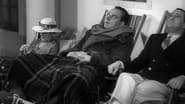malcolmgsw
If Stanley Lupino is still remembered it is because of the fact that he was Ida Lupino's father.He made 13 films,some of which have been shown many years ago TV.This one has not and was recently released on DVD.The copy is excellent.The problem is that whilst Lupino is a very skilled performer,particularly when it comes to physical comedy,this is not really a particularly funny film.Also unlike say Happy,or Over She Goes,this does not contain any memorable song and dance numbers.The sets and clothes are great to look at but that's about all you can say.Lupino died very young at just 49 so we will never know what a post war career might have held for him.
David Kelsey
This film has much in common with the Astaire/Rogers movies being made by RKO at that time. The plot concerns a bachelor playboy and an aspiring songstress thrown together by an embarrassing accident. He pursues her, she rebuffs him, but he persists, and after some amusing misunderstandings eventually sees off a rival suitor and wins her heart. The action takes place in a high society world of partying by gay young things, with never a hint of real life. The settings (nightclubs, expensive apartments, and ocean liners) are pure 1930s art deco. J Elder Wills' sets for this film fall not far short of the best of Van Nest Polglase.So much for the similarities; now for the differences. The musical numbers fall a long way short of Porter, Berlin, or Kern. There is only one notable dance by the leads, which is well enough done, but not memorable. The ensemble choreography throughout is, however, very good.Whereas the Astaire/Rogers series relied on supporting players like Eric Blore or Edward Everett Horton for comic relief, Lupino does his own comedy. A former acrobat, he is adept at trips and entanglements. He has two memorable scenes of this sort, one involving a knotted length of sheets, and the other a knitter's ball of wool.The print quality of the film in the recently released "The Ealing Studios Rarities Collection, vol. 6" is superb, with lustrous black and white doing full justice to the settings.Stanley Lupino came from a famous theatrical family; he was a cousin of Lupino Lane and the father of Ida Lupino. Charles Penrose, who plays the perpetually laughing passenger on the liner, was the first performer of "The Laughing Policeman" song, written by his wife.




